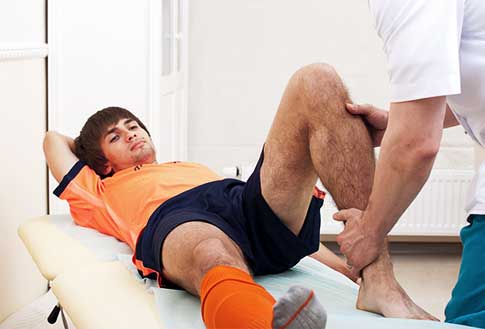Do You Dream of Becoming an Athletic Trainer? Here’s The inside Scoop.
If you want to work in the sports industry, consider the Sports & Rehabilitation Therapy Associates Degree offered at Fremont University. Learn about the program here, or fill out the form on this page to get more info.
 Torn between becoming a seasoned athlete and a reliable health care provider? Then consider becoming an athletic trainer as it’s something that allows you to be in both fields at the same time – you get to enjoy working directly with athletes while diagnosing and treating injuries commonly sustained by those who engage in sports.
Torn between becoming a seasoned athlete and a reliable health care provider? Then consider becoming an athletic trainer as it’s something that allows you to be in both fields at the same time – you get to enjoy working directly with athletes while diagnosing and treating injuries commonly sustained by those who engage in sports.
But before we discuss some of the athletic trainer essentials, let’s clarify something: an athletic trainer should not be confused with a fitness or personal trainer because the two are entirely different from one another, although their names are kind of similar sounding.
Various Duties of an Athletic Trainer
Put simply, an athletic trainer is someone who treats some of the most common injuries incurred by athletes during training and competitions, which could include muscles, bones and joints. He or she might also be responsible for dealing with injuries sustained by non-athletes such as military personnel or fitness gym subscribers, depending on where an athletic trainer is employed.
[contact-form-7 id=”31766″ title=”Be a better person of your self form” html_class=”gray-form”]
Aside from treating injuries, it is also part of the many different duties of an athletic trainer to diagnose injuries as well as disseminate pieces of information vital to athletes, such as preventive measures that can help in lowering their risk of getting injured or keeping already present injuries from worsening or properly healing.
In other words, an athletic trainer is also a teacher who imparts pertinent matters that need to be known by anyone that he or she is working with.
The duties of an athletic trainer do not begin and end there. If you become one, it might also be part of your various roles to come up with programs and implement them, such as how to prevent injuries from striking or how to recuperate at a much faster rate from incurred injuries. There could be administrative tasks that you will have to do, such as writing reports and keeping records.
Who Does an Athletic Trainer Works For?

Just because an athletic trainer is called such doesn’t necessarily mean that he or she works only with those who are in the world of sports. Despite the title, he or she might be someone who can provide expertise and knowledge to individuals who are outside of the sporting industry.
An athletic trainer can work with people of various ages and line of work. For instance, they might work with young children or college students, if employed at a school or university. An athletic trainer might also be employed at a fitness center or gym.
It’s also not unlikely for an athletic trainer to work at a medical facility or a company that provides ambulatory health care services, or even at a military facility. It wouldn’t be uncommon to work under a physician or any other member of the health care team, carrying out tasks that are delegated.
Clearly, there are so many people that an athletic trainer can help and lots of industries to be a part of. This only means that there are various career opportunities waiting for someone like you who is planning on becoming an athletic trainer. In fact, athletic trainers hold thousands and thousands of jobs to date.
Becoming Trained as an Athletic Trainer

Since an athletic trainer spends most of his or her time tending the needs of injured athletes it’s important for him or her to get the right training.
If you are planning on getting trained, it’s important for you to meet the minimum educational requirement. Degree programs are available for you to choose from that involve not only classroom but also clinical components. Classes that might be included in the coursework are anatomy, physiology, nutrition, biology, and a few others that are science- and health-related.
Signing up for an athletic trainer program could enable you to become certified or licensed, which is the requirement among athletic trainers in a number of states. However, laws and regulations pertaining to athletic trainers tend to vary from one state to the other, so make sure that you are acquainted with the ones that apply to you.
Financial Compensation and Career Advancements

Salaries received by athletic trainers differ, depending on where or who they work for. For instance, the median annual wage of someone who is employed at a state, local or private hospital could be very different from someone who works at a recreational sports center.
If you are wondering if it’s possible for you to take your career somewhere else once you are already an athletic trainer, the answer is a resounding yes! Actually, it’s not impossible for athletic trainers to eventually take on managerial roles. Some of them could become athletic directors, head athletic trainers and clinic practice administrators. To advance their careers, they may successfully complete advanced degrees related to the field.
In Conclusion
An athletic trainer carries out an assortment of duties and can be employed at many different fields or industries. There are plenty of career opportunities or advancements waiting for someone who excels at what he or she does. With the help of the above information, it will be easier for you to determine whether or not being an athletic trainer is the right career path for you.
Additional Career Options To Explore
Massage Therapist
Team Sports Therapist
Rehabilitation Therapist
Medical Massage Therapist
*In no way does Fremont University promise or guarantee employment or level of income/wages.

